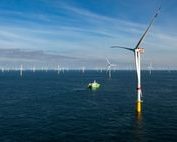The improved rotor blade certification standard was updated through a long-term joint industry project (JIP) to reflect the latest needs of wind turbine owners and manufacturers to ensure safe and reliable rotor blades
DNV, the independent energy expert and assurance provider, has led an innovative initiative resulting in the revision of the DNV-ST-0376 rotor blade standard, in response to the dynamic landscape of wind turbine development. This update, a product of joint industry collaboration, marks a significant milestone in enhancing reliability and safety within the wind energy sector.
In the fast-evolving realm of wind turbine technology, heightened reliability standards are crucial to keep pace with advancements. The project, tailored to meet the evolving needs of wind turbine developers, owners, and operators, aimed to ensure greater reliability and performance across the industry. Focusing on addressing the unique requirements of large, flexible blades for multi-megawatt turbines, the revised standard introduces comprehensive measures previously unaddressed in industry norms.
“The pace of modern wind turbine development demands that industry standards keep pace with changing trends and technologies. Through the development of industry service documents such as service specifications, standards, and recommended practices, DNV is actively engaged in driving the renewable energy sector forward. This update underscores our commitment to driving innovation and quality within the wind energy sector,” adds Kim Sandgaard-Mørk, Executive Vice President for Renewables Certification at DNV.
During the project, 26 leading companies across the wind turbine sector, including manufacturers, operators, and certifiers, contributed to refining and reviewing the standard. This inclusive approach ensures a comprehensive framework that caters to the diverse needs of the industry ecosystem.
For more information on DNV’s commitment to wind turbine reliability and safety, please refer to the white paper.
Source: DNV

















